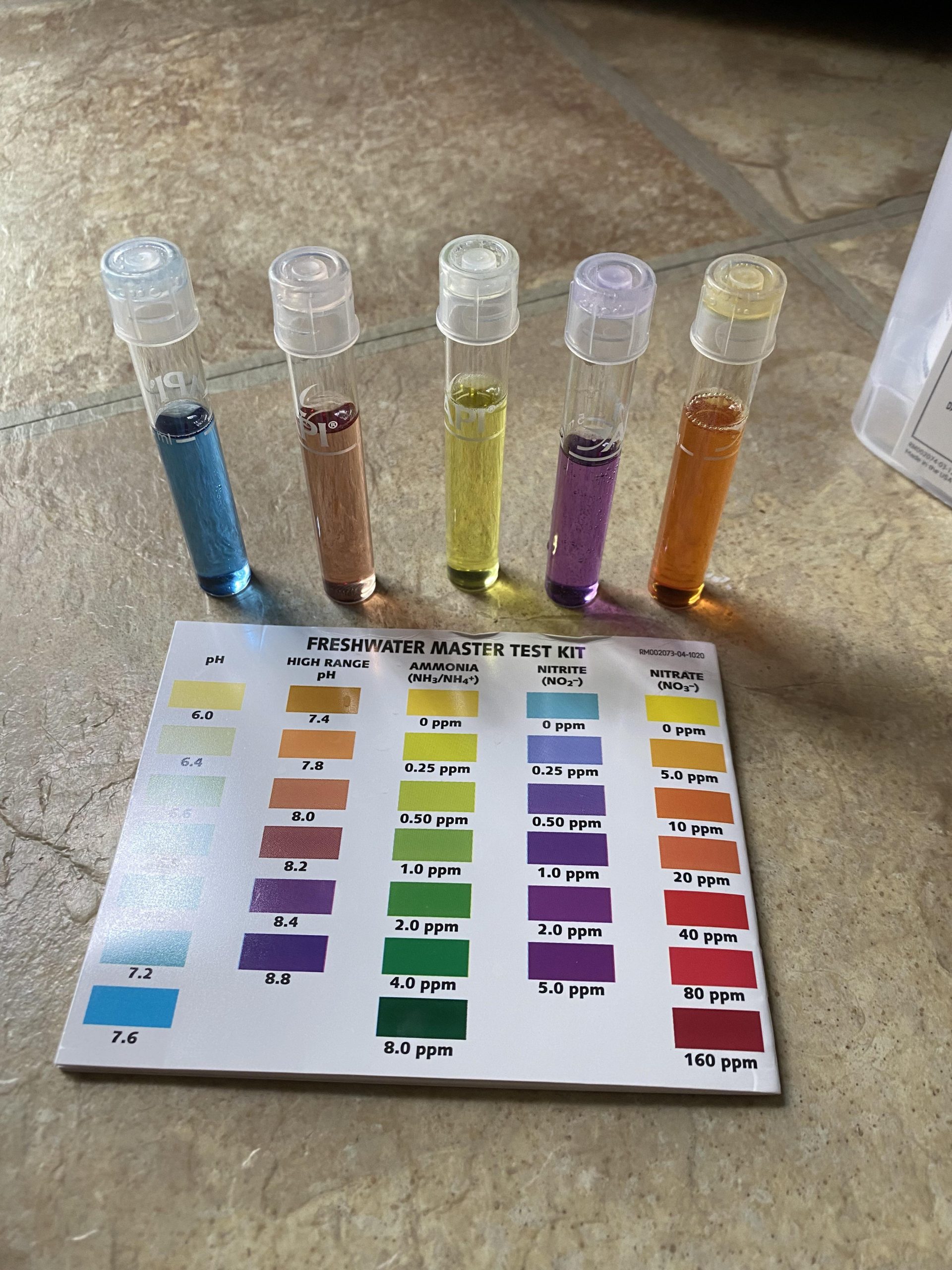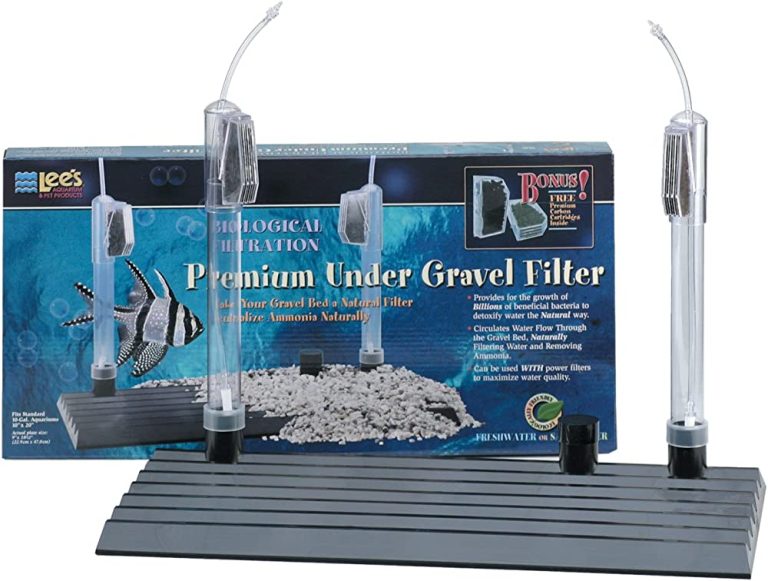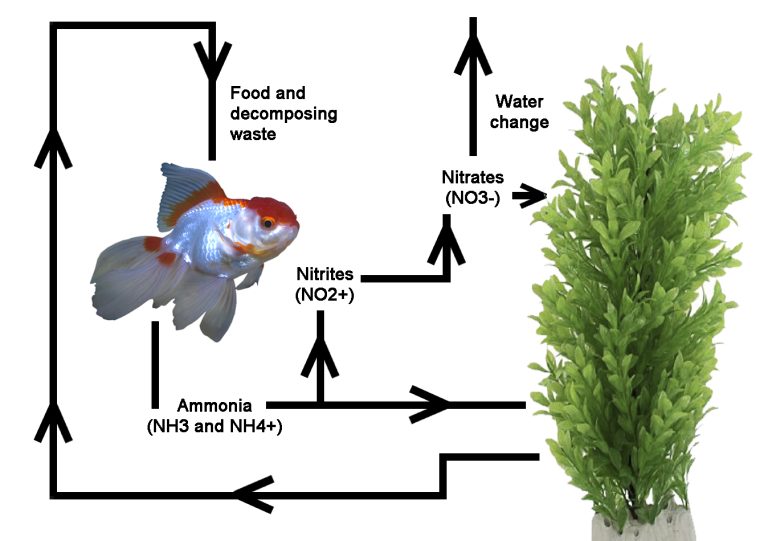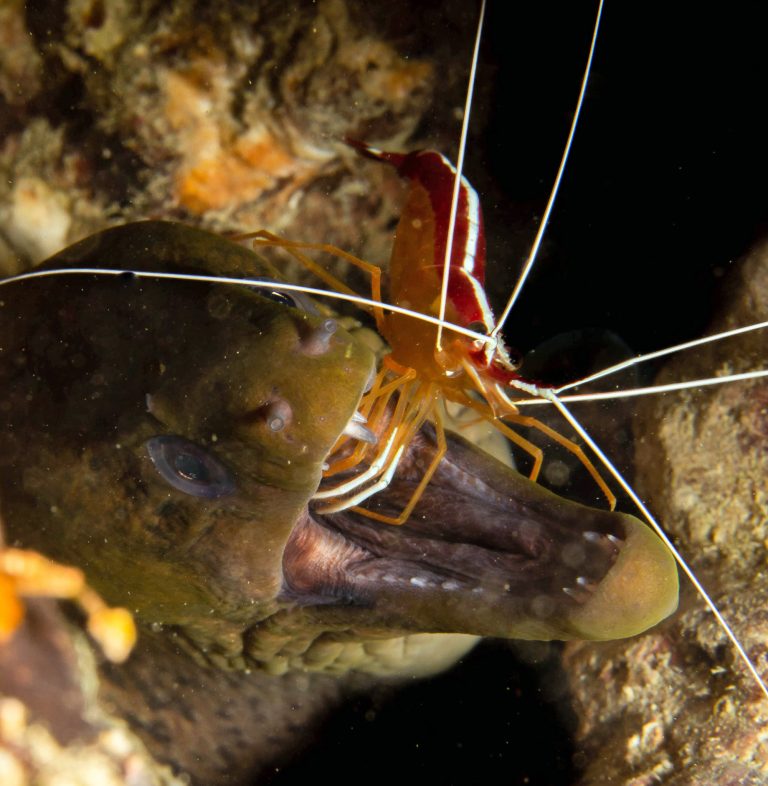Troubleshooting Nitrates: High After Water Change
A sudden increase in nitrate levels after a water change could indicate overfeeding or inadequate filtration. Conducting frequent water changes may also lead to nitrate spikes.
Maintaining appropriate nitrate levels in your aquarium can be a challenge, especially when you’re not sure what’s causing them to rise abruptly after a water change. Nitrate is a harmful by-product of organic matter, and high levels can be detrimental to the health of your fish and aquatic plants.
This article will explore some of the common reasons for nitrate spikes after water changes in an aquarium, how to prevent it, and how to correct the situation. By the end of this piece, you’ll be equipped with practical solutions for maintaining healthy nitrate levels in your aquarium.
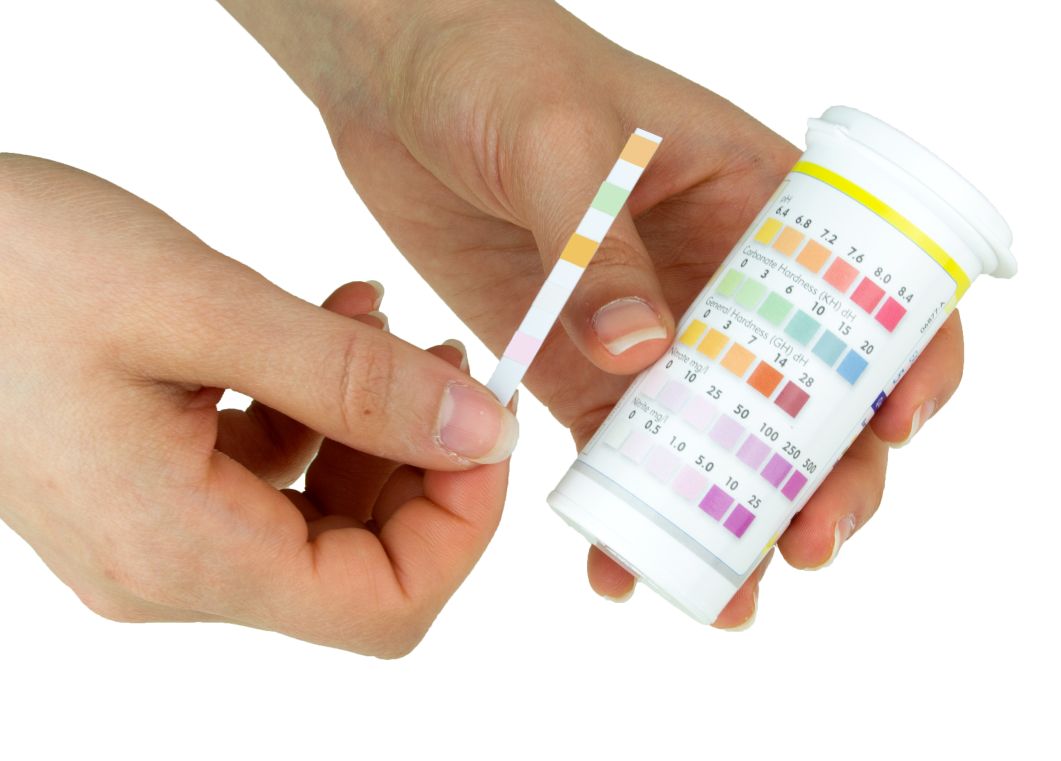
Credit: pondaquariumproblemsolver.co.uk
Importance Of Maintaining Optimal Nitrate Levels
What Are Nitrate Levels?
Nitrate levels refer to the concentration of nitrates within a body of water. Nitrates are a compound of nitrogen and oxygen that can enter the water through various means, including runoff from fields, fertilized lawns, and sewage system leaks.
When nitrates are present in a body of water, it can lead to the growth of algae, which can reduce the amount of oxygen that other marine life needs to survive. Nitrates levels range from 0 mg/l to over 50 mg/l and can be detected using various water testing kits.
Why Are Nitrate Levels Important?
Maintaining optimal nitrate levels in a body of water is essential to preserve aquatic life. Elevated nitrate levels can contribute to the growth of harmful algae blooms, which can lead to oxygen depletion and fish kills.
Additionally, high nitrate levels in water can be hazardous to human health. Nitrates can infiltrate drinking water and can pose significant health risks to infants, pregnant women, and individuals with specific health conditions.
What Happens When Nitrate Levels Are High?
When nitrate levels are high in a body of water, it can have detrimental effects on both the environment and human health. Below are some of the main impacts of high nitrate levels:
- Algae bloom: High nitrate levels can contribute to the growth of algae, which can reduce oxygen levels and cause other aquatic plant life to die. Harmful algal blooms can release toxins into the water that pose a risk to marine life and humans.
- Reduced water clarity: A significant drive in algae blooms is the development of suspended sediment. This sediment decreases light penetration, reducing photosynthesis essential for aquatic plant life.
- Elevated nitrite levels: High nitrate levels in water can convert to nitrite, which can be lethal to fish and other aquatic life forms.
- Health impacts: High nitrate levels in drinking water can be hazardous to human health and can cause a variety of symptoms, including diarrhea, vomiting, and respiratory distress. Long-term exposure can increase the risk of certain cancers.
Maintaining optimal nitrate levels is essential for both environmental and human health purposes. Monitoring and testing nitrate levels regularly can help to mitigate the potential risks associated with elevated levels of nitrates in water.
Common Causes Of High Nitrate Levels After A Water Change
Nitrates high after water change: common causes of high nitrate levels after a water change
As a fish tank owner, maintaining the ideal water conditions is vital. That’s why it’s concerning when you find your nitrate levels rising after a routine water change. Rest assured, there are common reasons for this, which you can take action to avoid.
Let’s delve into them below using h3 headings.
Nitrates In Tap Water
Sometimes, tap water can contain high nitrate levels. This is a common reason for observing an increase in nitrate levels after a water change. Interestingly, in some areas, water companies add nitrogen compounds such as nitrates to the water supply, making it permissible to have minimal levels of nitrates in tap water.
Here are a few key points to note:
- Cities located near farms or rural regions have a higher probability of nitrates in tap water
- You can test your tap water to ascertain the nitrate levels
- Utilizing a good water conditioner can reduce nitrates in tap water
Overfeeding Fish Or Overstocking The Tank
Overfeeding your fish or keeping too many fish disproportionally to the aquarium size generates a substantial amount of waste. This excess waste increases the ammonia level in the tank, leading to nitrate levels building up over time. Here is a brief paragraph of key points:
- Feed your fish small amounts at 2-3 intervals instead of large portions at once
- Monitor the feeding habits of your fish
- Aim to keep a proper fish-to-tank volume ratio
Inadequate Biological Filtration
Biological filtration plays a crucial role in maintaining water quality in a fish tank. It uses beneficial bacteria in the filter media to break down fish waste and convert it to less harmful compounds such as nitrate. An inadequate biological filter reduces the bacteria population, leading to the accumulation of nitrogen-based compounds in your tank and a spike in nitrate levels.
Here are a few key points for you to consider:
- Check the filtration system to ensure correct operation
- Clean out the filter regularly as debris or waste build-up can clog it
- Consider supplementing the biological filtration with a chemical filter to maximize efficiency
We hope that you found our discussion on nitrate levels informative. High nitrate levels can have adverse effects on your fish, so it’s best to maintain a balance. Keep in mind that identifying the root cause of the high nitrate levels and swiftly counter-acting it can have a significant impact on the well-being of your fish.
Step-By-Step Guide To Troubleshooting High Nitrate Levels After A Water Change
Test Nitrate Levels
Nitrates are harmful to your fish and plants, and high levels can be alarming to aquarium owners. That’s why testing your water is critical to spot any alarming levels. Here are the steps to follow:
- Choose a reliable nitrate test kit.
- Take a water sample of your aquarium.
- Add the reagents and wait for the allotted time.
- Record the nitrate reading.
Check Tap Water For Nitrate
If your tap water has high nitrate levels, it can cause difficulties maintaining the aquarium’s nitrate levels. It’s critical to test your tap water for nitrates as you fill your tank, and here’s how to do it:
- Test your tap water with the same nitrate test kit you’ve used in your aquarium.
- Record the nitrate reading.
Adjust Feeding And Stocking Habits
Feeding and stocking habits influence the nitrate levels in your aquarium. Reduce your fish’s food portions if you have high nitrate levels. Additionally, you can opt for species with a smaller bioload that produce fewer nitrates. Here’s how:
- Feed your fish once or twice a day and avoid overfeeding.
- Look for fish species that produce less waste.
- Monitor the number of fish in your tank; reduce their numbers if necessary.
Enhance Biological Filtration
Biological filtration converts ammonia from fish waste to nitrates. If your aquarium’s biological filter is failing, you’ll have high nitrate levels. You need to follow these steps to enhance biological filtration:
- Regularly clean and maintain a healthy biological filter in your aquarium.
- Check your filter’s flow and ensure it’s working correctly.
- Add more bio-filter media or increase the media’s surface area.
Consider Chemical Filtration Options
Chemical filtration reduces the nitrate levels in your aquarium, but it can never replace the biological one. Here are some ways to consider it:
- Add chemical filter media to your aquarium.
- Use nitrate-reducing pads or resins.
- Use a protein skimmer to remove organic compounds that naturally decompose into nitrates.
If you follow these steps, you can troubleshoot and reduce high nitrate levels in your aquarium and keep your fish and plants healthy.
Additional Tips For Maintaining Optimal Nitrate Levels
Background: Nitrates High After Water Change
Maintaining a healthy and sustainable aquarium can be challenging, especially if you’re a beginner. One of the most common problems that many aquarium owners face is high nitrate levels after a water change. If left unchecked, high nitrate levels can lead to a variety of problems, such as algae growth, fish stress and disease.
Nitrate is a by-product of the nitrogen cycle, which is essential for keeping an aquarium’s ecosystem balanced. It’s formed when ammonia and nitrite are broken down by beneficial bacteria into less harmful compounds. Nitrate is less toxic than ammonia and nitrite, but high levels can still be harmful to fish and other aquatic animals.
Conduct Regular Water Changes
Regular water changes are essential for maintaining optimal nitrate levels in an aquarium. Changing 10-15% of the aquarium’s water every week will help to remove excess nitrates and other harmful compounds. Here are some useful tips to keep in mind when conducting water changes:
- Use a good quality dechlorinator to treat tap water before adding it to the aquarium.
- Use a siphon tube to remove debris and uneaten food from the substrate.
- Do not change all the water at once, as this can shock the fish and other aquatic animals.
- Monitor nitrate levels regularly with a test kit to determine the appropriate frequency and volume of water changes.
Keep Plants In The Aquarium
Plants play a vital role in maintaining optimal nitrate levels in an aquarium. They absorb nitrate and other nutrients, reducing their concentration in the water. Adding live plants to the aquarium can also create a natural and aesthetically pleasing environment for your fish and other aquatic animals.
Here are some factors to keep in mind when adding plants to your aquarium:
- Choose plants that are suitable for your aquarium’s lighting, temperature and water chemistry.
- Use a nutrient-rich substrate to support plant growth.
- Supplement with fertilizers and co2 as needed.
- Prune plants regularly to remove excess organic matter.
Avoid Overcrowding The Tank
Overcrowding the aquarium can lead to excess waste and increased nitrate levels. Each fish and aquatic animal requires a specific amount of space to thrive, so it’s essential to research the requirements of each species before adding them to the aquarium.
Here are some tips to keep in mind when stocking your aquarium:
- Follow a general rule of thumb of 1 inch of fish per gallon of water.
- Consider the adult size of the fish when selecting tank size.
- Add fish gradually, rather than all at once.
- Regularly monitor nitrate levels to determine if the tank is overcrowded.
By following these additional tips, you can maintain optimal nitrate levels in your aquarium, ensuring a healthy and sustainable ecosystem for your fish and aquatic animals. Remember to conduct regular water changes, keep plants in the aquarium, and avoid overcrowding the tank, and you’ll be well on your way to success.
Recap Of Key Points
Importance Of Maintaining Optimal Nitrate Levels
Maintaining optimal nitrate levels in your aquarium is essential for the health and well-being of your aquatic pets. As a responsible aquarium owner, you must ensure that the nitrate levels in your aquarium remain within acceptable limits to promote a healthy ecosystem.
High nitrate levels can stress and harm your fish, invertebrates, and plants and can lead to illnesses and even death. In addition to harming aquatic life, high nitrate levels in your aquarium can also cause issues with your water quality and clarity.
Common Causes Of High Nitrate Levels After A Water Change
It is not uncommon to experience high nitrate levels after a water change. This is due to excess organic waste that gets stirred up during the process. The following are the most common causes of high nitrate levels after a water change:
- Uneaten food, fish waste, and other organic debris in the aquarium
- Overcrowding of fish and other aquatic creatures in the aquarium
- Overfeeding your fish
- Infrequent or improper water changes
- Inadequate filtration
Step-By-Step Guide To Troubleshooting High Nitrate Levels After A Water Change
If you’ve done a water change and found that your nitrate levels are high, don’t worry! Here’s a step-by-step guide to troubleshooting high nitrate levels after a water change:
- Test your water using a high-quality test kit to confirm the nitrate levels are high.
- Determine the root cause of the high nitrate levels. Look for uneaten food, fish waste, and other organic debris in the aquarium. Make sure you aren’t overfeeding your fish and that you have adequate filtration.
- Remove any excess debris using a siphon and change out your filter media if necessary.
- Increase the frequency of your water changes, or the number of gallons you change each time to for better results.
- Add live plants to your aquarium to help absorb nitrates.
Additional Tips For Maintaining Optimal Nitrate Levels
Besides troubleshooting high nitrate levels in your aquarium after a water change, there are additional tips you can follow to maintain optimal nitrate levels in your aquarium.
- Ensure that your aquarium is not overstocked with fish and other aquatic creatures
- Clean your aquarium regularly by removing uneaten food, fish waste, and other organic debris
- Use high-quality filtration to remove excess waste from your aquarium
- Add beneficial bacteria to your aquarium
- Monitor your nitrate levels weekly to ensure they remain within acceptable limits.
By following these tips, you can enjoy a healthy and thriving aquarium ecosystem with optimal nitrate levels.
Frequently Asked Questions Of Nitrates High After Water Change
Why Do Nitrates Increase After A Water Change?
After a water change, nitrates can increase due to disruption of the aquarium’s nitrogen cycle and the addition of new water that contains nitrates.
How Long Do Nitrates Stay High After A Water Change?
High nitrate levels after a water change can last for several days up to a week, depending on the size of the tank and the amount of water changed.
Can High Nitrates Harm Fish After A Water Change?
Yes, high nitrate levels can harm fish after a water change. Elevated nitrates can cause health problems for fish and lead to algae blooms.
How Do You Reduce Nitrates After A Water Change?
To reduce nitrates after a water change, perform regular water changes, maintain a healthy biological filter, and limit overfeeding. Consider adding live plants or a nitrate-removing filter media.
Conclusion
The level of nitrates in aquariums can be a common issue for fish keepers. After performing a water change, it is not uncommon to notice a spike in nitrate levels, which can be concerning. However, it is essential to understand the reasons behind this and take the necessary steps to avoid this issue.
By closely monitoring the amount of food offered to fish, ensuring proper filtration, performing regular water changes, and using live plants to help absorb nitrates, the levels can be maintained within the safe range for the fish. Overall, keeping a close eye on the nitrate levels in the aquarium is crucial to the health of the fish and other inhabitants.
We hope this concise guide offered you the necessary tips and insights to help reduce the risks and maintain healthy levels in your aquarium.
